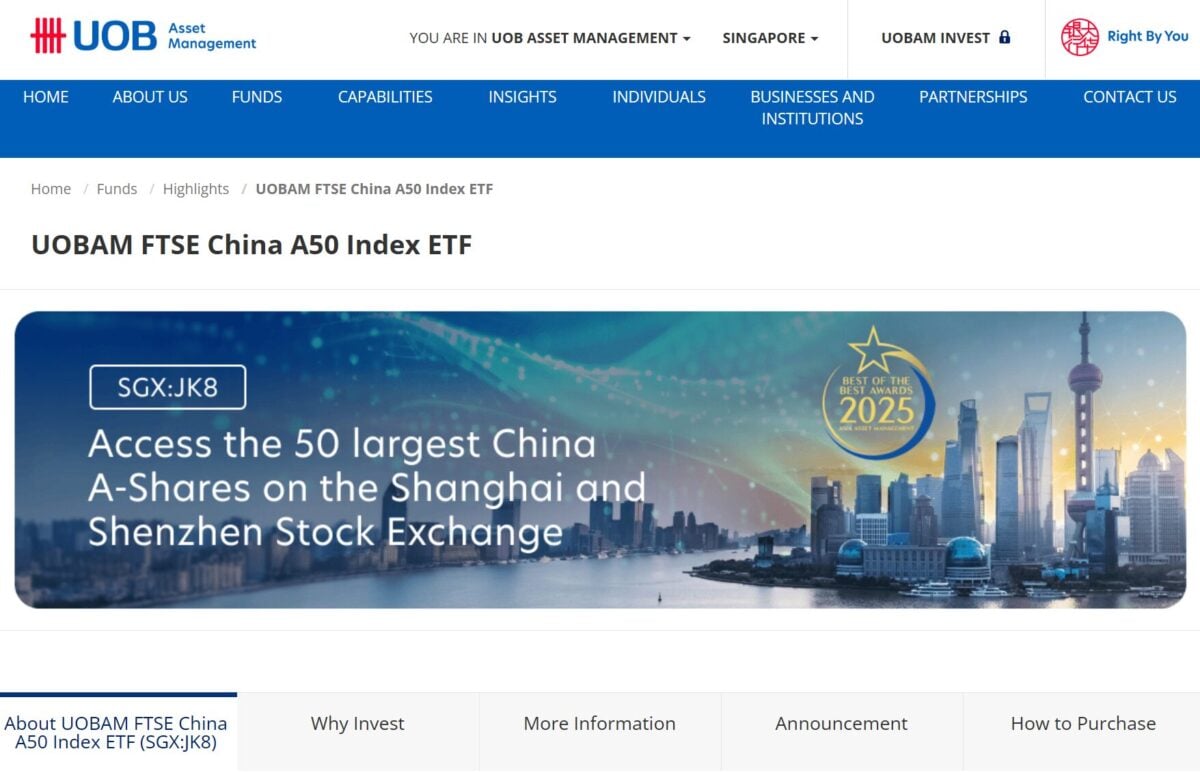
This article was written in collaboration with the CPF Board. All views expressed in this article are the independent opinion of DollarsAndSense.sg based on our research. DollarsAndSense.sg is not liable for any financial losses that may arise from any transactions and readers are encouraged to do their own due diligence. You can view our full editorial policy here.
Most people we talk to already understand the importance of growing their wealth over time. They know that investing will help support their journey in wealth accumulation.
We also know how important it is to plan for our retirement. As we grow older, there will come a point when we may no longer want to, or be able to work. During those years, we still need to cover daily expenses and choose to continue living our pre-retirement lifestyles. This is where retirement planning comes into play to ensure that when we stop working, we have a steady stream of income that can last throughout our retirement years.
Many of us tend to think that investing and retirement planning are the same thing. In reality, they are not.
While both are essential to our financial journey, they serve different purposes and require different strategies. Investing is about growing our money over time by taking on a certain level of risk, in exchange for potential returns. Retirement planning, on the other hand, is focused on ensuring we have enough resources to support ourselves when we’re no longer earning an income.
The confusion often comes from the fact that retirement planning typically involves an investment component. But we need to understand that retirement planning is much broader. It’s not just about how much we invest. It’s about preparing today for our future lives, which includes being aware of our financial habits (how much we spend and save today), estimating the amount of money we will need in retirement to meet our goals and dreams, and when we aim to retire.
Do Higher Returns Mean Higher Risk
One common concern that many people often share is this: we know investing is important, but we’re afraid of taking risks.
This fear is completely normal. Most people are risk-adverse and prefer to avoid uncertainty, especially when it comes to our hard-earned money.
At the same time, we understand that to grow our savings, investments can play a role for some of us. But does that mean we all need to embrace high-risk investments to secure our financial future? Not necessarily.
The answer is in finding a strategy that works for you. While some may pursue higher returns through riskier investments, many successful retirement plans are built on steady, lower-risk approaches that align with an individual’s comfort level and financial goals. Remember, the priority is not about chasing returns, but about planning for a future that you feel confident in.
Consider Your Retirement Plan When Purchasing A Home
For most of us, buying a home will likely be the single largest purchase we make in our lifetime. Because this decision involves a significant financial commitment, it directly impacts our ability to save for retirement. Therefore, it’s important to ensure that the home we choose not only meets our needs, but also aligns with our overall retirement plan.
By selecting a home we can comfortably afford, we create space in our budget to focus on other important financial goals, like building our retirement nest egg. Why is this important? Because buying a home that stretches our budget to its limits could hinder our ability to save adequately for retirement. If a significant portion of our income goes towards housing expenses, we may find it challenging to allocate sufficient funds for our future needs. This could mean that, while paying off our home, we might be under-prepared for retirement, which could lead to financial stress later in life.
Using The CPF Home Purchase Planner To Determine Affordability
One financial planning tool that can help us determine home affordability is the CPF Home Purchase Planner. By taking into account details such as our age, gross monthly income, monthly expenses, Ordinary Account balance and cash savings, the CPF Home Purchase Planner can help us determine the home budget we can comfortably afford.
For ease of use, we can log in with Singpass, which will autofill CPF-related data. In this example, let’s assume I have a gross monthly income of $5,000, monthly expenses of $3,000, and cash savings of $30,000, and that I’m currently in my mid-30s.

Table 1, CPF Home Purchase Planner, personal income information
There is an option to add a co-owner, which is useful in Singapore, where many purchase property with their partner. In this scenario, let’s assume my partner is 30 years old, with a similar monthly income, cash savings, and expenses, and has a CPF Ordinary Account balance of $50,000.

Table 2, CPF Home Purchase Planner, spouse income information
As I’m a first-time buyer, I indicate that I don’t have an existing property to sell. Selecting the other option will help to account for additional proceeds arising from the sale of your existing property.

Table 3, CPF Home Purchase Planner, housing situation
I’ve set a retirement income goal of $2,000 per month. Based on this, the planner can calculate how much I’ll need by age 65 to maintain the same purchasing power, accounting for inflation.

Table 4, CPF Home Purchase Planner, housing situation
Additionally, there’s an option to see how our home purchase might affect our ability to meet our retirement goals. This feature is valuable because housing decisions and retirement planning are going to be closely interconnected.
According to CPF’s calculation, if I aim for a retirement payout of $2,000 in today’s dollars, I would need approximately $3,560 per month when I turn age 65, assuming an inflation rate of 2%.

Table 5, CPF Home Purchase Planner, retirement goal
How Much Can I Afford For My Home?
With all the inputs, the CPF Home Purchase Planner will estimate a home purchase budget. Based on my hypothetical inputs, the planner suggests a maximum budget of $702,922 if buying an HDB flat with an HDB loan, or $631,509 if purchasing any property with a bank loan.

Table 6, CPF Home Purchase Planner, results
The CPF Home Purchase Planner stands out from other planners due to its focus on the connection between housing and retirement. When reviewing the results, I could see the impact of my home purchase decision on my retirement payouts/savings. In my case, I’m projected to achieve my retirement payout goal as long as I purchase a flat (using HDB loan) within a budget of $702,000.
Achieving Financial Calm In Our Lives
When buying a home, it’s essential to consider a couple of rules of thumb: keep your mortgage servicing ratio within 25%, set aside sufficient savings in your CPF Ordinary Account (OA), stay within the monthly contributions to your OA, and buy within your means. Beyond healthcare needs, having a fully paid-up home and sufficient regular income during retirement are among the basic needs for retirees in Singapore. The CPF Home Purchase Planner helps balance these priorities by suggesting a home purchase budget within our means while ensuring we save enough for our retirement nest egg.
From the calculation, we can see that there is going to be a trade-off between how much we choose to spend on our home and our ability to achieve our retirement goal. This balance is central to achieving “financial calm”— where we can enjoy financial stability and feel confident in managing our finances, knowing that we have enough of a financial buffer to withstand challenges such as illness or unemployment.

Table 7, CPF Home Purchase Planner, results
Contrary to what some may think, the path to financial calm doesn’t necessarily require us to invest on our own. Through mandatory CPF contributions or CPF top-ups, we can build a retirement fund that offers peace of mind. By focusing on long-term goals and making steady progress with the help of tools like the CPF Home Purchase Planner, we can reduce the anxiety often associated with financial planning.
Make every day count, and find your financial calm by making informed decisions today. Explore useful tips and resources to build the financial confidence necessary to achieve your life goals at cpf.gov.sg/beready.
The post Why Investing & Retirement Planning Isn’t Necessarily The Same Thing appeared first on DollarsAndSense.sg.











